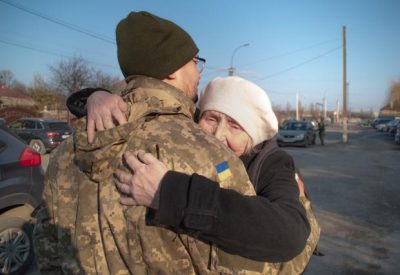Ukraine War Offers Glimpse at “Modern Conscription”

All Global Research articles can be read in 51 languages by activating the Translate Website button below the author’s name.
To receive Global Research’s Daily Newsletter (selected articles), click here.
Click the share button above to email/forward this article to your friends and colleagues. Follow us on Instagram and Twitter and subscribe to our Telegram Channel. Feel free to repost and share widely Global Research articles.
***
January 27th of this year marked fifty years since the draft was officially suspended in the United States. And while young American men are still forced to register with the Selective Service, we have been fortunate to go without a draft for half a century, despite Washington’s hyper-aggressive foreign policy.
That amount of time can make things feel distant. And even though the program is all set to fire right back up with a word from the president, there’s a sense that the draft is an issue from a different era.
But the war in Ukraine offers a window into what conscription looks like in today’s day and age. Both sides have resorted to forcing a part of the population to put their lives on the line to serve the interests of the regimes in Kyiv and Moscow. And the lack of condemnation, or even interest, from our fellow Americans should concern all advocates of self-ownership.
After the fall of the Soviet Union, both Ukraine and Russia continued to require male citizens to serve time in the military, though the term was gradually reduced from two years to one.
In 2013, Ukrainian President Viktor Yanukovych abolished conscription. Less than a year later, the new Western-backed Ukrainian government reinstated the draft and forced men to fight the people of eastern Ukraine who didn’t want to live under the new government in Kyiv.
After serving their time as active duty soldiers, Ukrainian conscripts remained in a reserve status, eligible to be recalled until the age of 55.
Within hours of the first Russian airstrikes that signaled the beginning of the February 2022 invasion, Ukrainian President Volodymyr Zelensky declared martial law, called up men in the reserves, conscripted new soldiers, and prohibited men between the ages of 18 and 60 from leaving the country.
Zelensky also authorized the “release” of convicts with combat experience to bolster Kyiv’s forces. At the same time, conscription appears to have been implemented as a new form of punishment. Men caught breaking curfew and getting into street fights have received conscription notices after being detained by police.
Russian conscription followed a similar trajectory to Ukraine’s after the fall of the USSR. The mandatory term of military service for Russian men was rolled back to one year in 2008. And as recently as 2019, Russian President Vladimir Putin voiced support for abolishing conscription.
But, genuine or not, those sentiments disappeared as the region descended into war. Shortly after the February invasion, Russia held its spring draft and conscripted 134,500 people. 120,000 were conscripted last Fall. The Russian government has claimed conscripted soldiers are only being sent to replace volunteer soldiers in their posts, with the volunteer soldiers then sent to the front in Ukraine, but some have disputed this.
Today, over a year into the invasion, Ukraine is relying more on conscripts as their losses mount. Until recently, officials could only deliver draft notices to someone’s home address. Some found they could avoid the summons by staying away from their official addresses.
New rules allow officials to track down new conscripts wherever they may be. Men are being stopped in the street and questioned about their draft status. With few eligibility exceptions available and a brutal front line, the stricter rules have many Ukrainian men fearing for their safety. The conscripts have so far received worse equipment and inferior training than the volunteer forces before being sent into battle.
Russia has also had an issue tracking down new conscripts. The Kremlin’s approach has been to transition to a digital platform. All eligible men are required to register through an online government portal. Draft notices are sent out electronically and are considered “delivered” immediately, meaning the man is instantly on the clock for reporting to his local recruitment office.
In the enduring words of William Norman Grigg, “conscription indisputably rests on the assumption that each individual is the State’s property, to be sacrificed when those controlling the State deem it necessary for their protection.”
The draft may lie dormant in the U.S., but that assumption remains. The war in Ukraine serves as a reminder that conscription is not extinct. It remains a clear and present threat to liberty.
*
Note to readers: Please click the share button above. Follow us on Instagram and Twitter and subscribe to our Telegram Channel. Feel free to repost and share widely Global Research articles.
Featured image copyright AdobeStock

